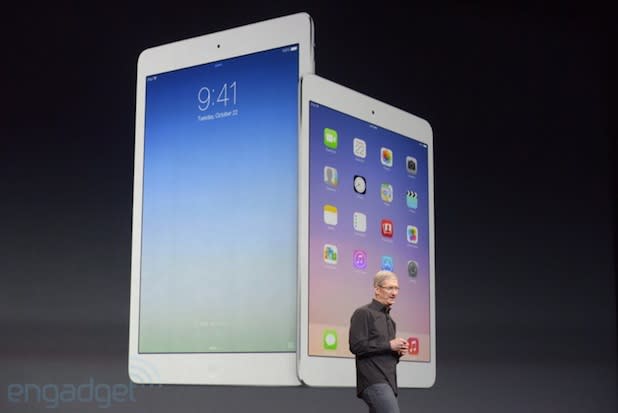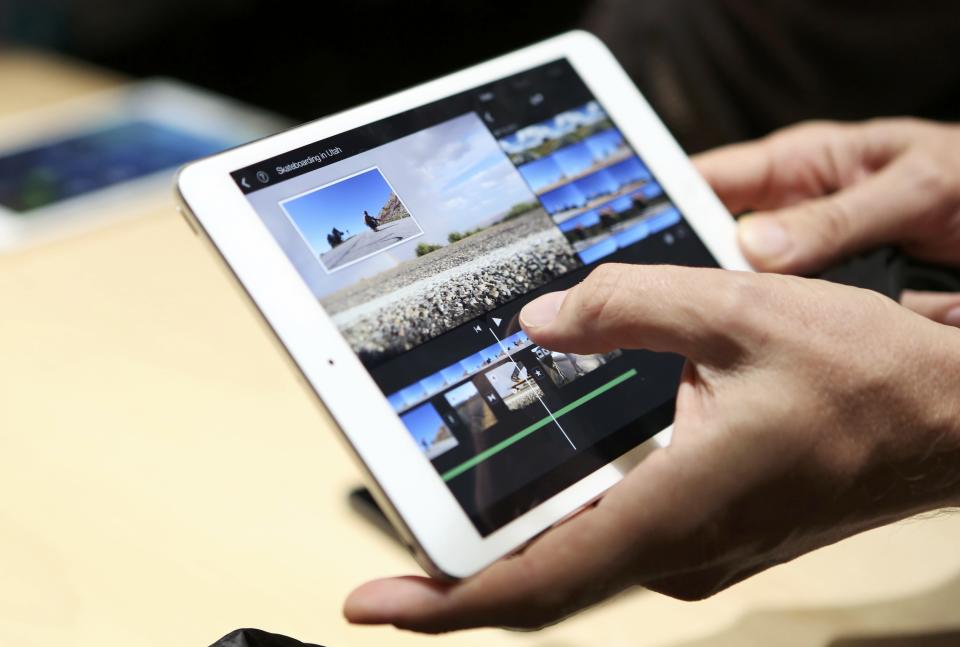Apple's big iPad problem: How do you convince owners to upgrade when their old machines work just fine?
I love my second-generation iPad. I’ve used it daily since I bought it in 2011 and have had no problem totally ignoring the third- and fourth-generation upgrades that came later, in 2012. That is testimony to a great and durable product.
It’s also terrible, terrible news for Apple. After all, while events like Tuesday’s announcement of the next round of iPads are about whipping up hype for the new, they’re also about convincing people like me that the object I already own, enjoy and use constantly is horribly obsolete.
It's a strategy that Apple has perfected with its iPhone unveilings, but one that it still seems to be figuring out on the tablet side of things.
How did Apple tempt me this time? Partly the answer involved improved industrial design. The latest iPad is lighter and sleeker: just 1 pound (compared to my 1.5 pound iPad 2, and the 1.4 pounds for the last version) with a significantly “smaller bezel.” There were some spec upgrades, too: a more powerful chip, improved WiFi performance and better battery life.
The thing looks great, and we all love better specs. But there was nothing to convince me that what I already own just became the Model T of tablets. And evidently I’m not the only one who needs convincing: A recent report by Localytics concluded that 38 percent of all iPads in use — a commanding plurality — are iPad 2s. Yes, if you add up the users of 3rd and 4th generation versions of the device, and the iPad mini, the total number tops iPad 2-ers like me. But still, for a gizmo that’s been superseded by two upgrade iterations, that loyalty is remarkable. By device standards, the iPad 2 has proved remarkably resistant to obsolescence. It is starting to look like the Windows XP of tablets.
And again, that’s what was really at stake today: Not only touting the latest— but indirectly denigrating yesterday’s latest. My suspicion is that Apple did not do enough.
Establishing the latest iPad as the tablet device to own isn’t just important for cajoling chumps like me into buying a replacement for an object that works perfectly well. It’s also the way that — as with the iPhone — Apple establishes itself as the maker of tech that sets the standard for a whole category.
In the tablet realm, the iPad was certainly the innovator, and it’s been justly rewarded by the market: As Cook noted today, the company has sold 170 million iPads. Even so, it’s had a harder time establishing the true alpha status of the iPod and iPhone. A slew of competitors from Amazon to Google, many offering up tablets with notably lower price tags, have found audiences — manufacturers who waited too long to challenge Apple's music player and phone have not made the same mistake with tablets.
A dazzling advance would not only seduce existing customers like me, it would reiterate some real, tangible distance between the iPad and its rivals (and recharge its sales figures).
So what does it take to make a device seem obsolete? I’d say there are two categories of answer. One is some sort of relatable spec improvement: Twice the memory that your straining laptop has, or the ability to hold three times more songs than your current MP3 player.
The other category basically involves aesthetics and form: A remarkably lighter object, a flashy new color that signals to the world you’ve got the latest thing. Apple is skilled at this, as the intense interest in the gold version of the most recent iPhone proved yet again. Indeed, the Macbook Air’s form-factor success even got an indirect nod in one of today’s few surprises: The new iPad is called the iPad Air.
Maybe these gambits just don’t work as well in the context of tablets. I’ve never bumped against the technical limits of my iPad 2. And since I don’t flash it in public very often, I’m ambivalent about whatever stylistic statement it may or may not make.
To oversimplify: We upgrade our computers because we have to and our smartphones because we want to. But we just don’t seem to feel the same compulsion with tablets — and that raises the bar. Presumably someone will come up with a way to make me feel my iPad is obsolete, but it didn’t happen today. And I’m not complaining. Thanks, Apple, for making such an excellent product that I feel no need to spend money for any upgrade whatsoever!




